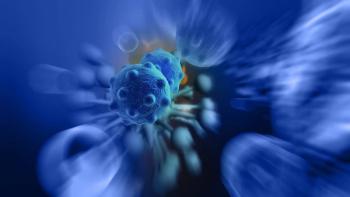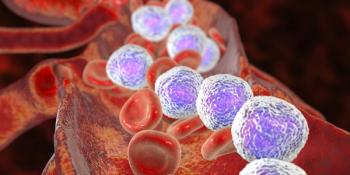
Natural Killer Cell Levels Could Influence Immunotherapy Outcomes for Lymphoma
Patients with follicular lymphoma or diffuse large B-cell lymphoma with a low peripheral blood natural killer cell count at baseline had shorter time to progression.
Patients with follicular lymphoma or diffuse large B-cell lymphoma (DLBCL) with a low peripheral blood natural killer cell count at baseline had shorter time to progression, according to a recent study.
“Peripheral blood natural killer cell count might therefore represent a valuable and easily accessible biomarker in clinical practice,” wrote researcher Magdalena Klanova, of Charles University General Hospital in Prague, and colleagues, in
Natural killer cells are key effector cells for anti-CD20 monoclonal antibodies such as obinutuzumab and rituximab; however, little was known about whether or not pretreatment natural killer cell count affected outcomes in patients treated with these therapies.
In this study, researchers measured baseline peripheral natural killer cell count in patients with follicular lymphoma treated with obinutuzumab (n = 1,064) or rituximab (n = 1,202) plus chemotherapy from the phase III GALLIUM trial, and patients with DLBCL treated with obinutuzumab (n = 1,287) or R-CHOP (n = 1,418) from the phase III GOYA trial.
At baseline, the median peripheral natural killer cell counts were 222 cells/μL in follicular lymphoma and 196 cells/μL in DLBCL. Counts were considered low in 10.2% of patients with follicular lymphoma and 19.8% of patients with DLBCL.
An examination of disease characteristics in patients with low vs high baseline peripheral blood natural killer cell counts showed that low levels were more frequently associated with extranodal involvement, elevated lactate dehydrogenase (LDH) levels, and high Follicular Lymphoma International Prognostic Index score in patients with follicular lymphoma. Among patients with DLBCL, low levels were associated with higher Ann Arbor stage, ECOG performance status, International Prognostic Index score, extranodal involvement, and elevated LDH levels.
Patients with follicular lymphoma with low baseline natural killer cell counts had shorter progression-free survival (hazard ratio [HR], 1.48; 95% CI, 1.02–2.14; P = .04) and overall survival (HR, 2.20; 95% CI, 1.26–3.86; P = .0058).
Baseline levels were only associated with shorter progression-free survival in patients with DLBCL (HR, 1.36; 95% CI, 1.01–1.83; P = .04). According to the researchers, the association in DLBCL was driven mainly by the cell-of-origin subtype. There was no significant association seen in unclassified or activated B-cell–like DLBCL subtypes.
“Our results provide a rationale for investigating anti-CD20 antibodies in combination with agents that enhance natural killer cell function,” the researchers wrote.
Newsletter
Stay up to date on recent advances in the multidisciplinary approach to cancer.





















































































